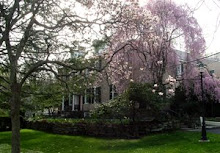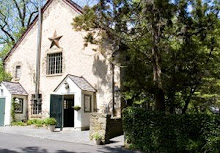While some efforts to "go Green" can be big undertakings, its important to think of the little things that can be done. They add up!
When replacing the field stone barn floor, we were careful pulling up the old boards.
When replacing the field stone barn floor, we were careful pulling up the old boards.
 Nails removed and trimmed up, the old materials will be used for other projects.
Nails removed and trimmed up, the old materials will be used for other projects.The brick courtyard was re-laid using the old bricks, mixing in new ones to replace only the crumbled bricks. Not to mention, the old bricks helps to maintain the rustic charm of the space.
 Last year's gourds used for fall decorating were left to dry out. We cleaned them up and made them into bird-houses.
Last year's gourds used for fall decorating were left to dry out. We cleaned them up and made them into bird-houses. They will hopefully attract & house birds that eat bugs in our vegetable garden.
They will hopefully attract & house birds that eat bugs in our vegetable garden.
 Don't forget, little things often grow into big things! We've started seeds and seedlings have emerged!
Don't forget, little things often grow into big things! We've started seeds and seedlings have emerged! With a planting schedule several month long, there will be plenty of vegetables, herbs & flowers for the kitchen.
With a planting schedule several month long, there will be plenty of vegetables, herbs & flowers for the kitchen.














